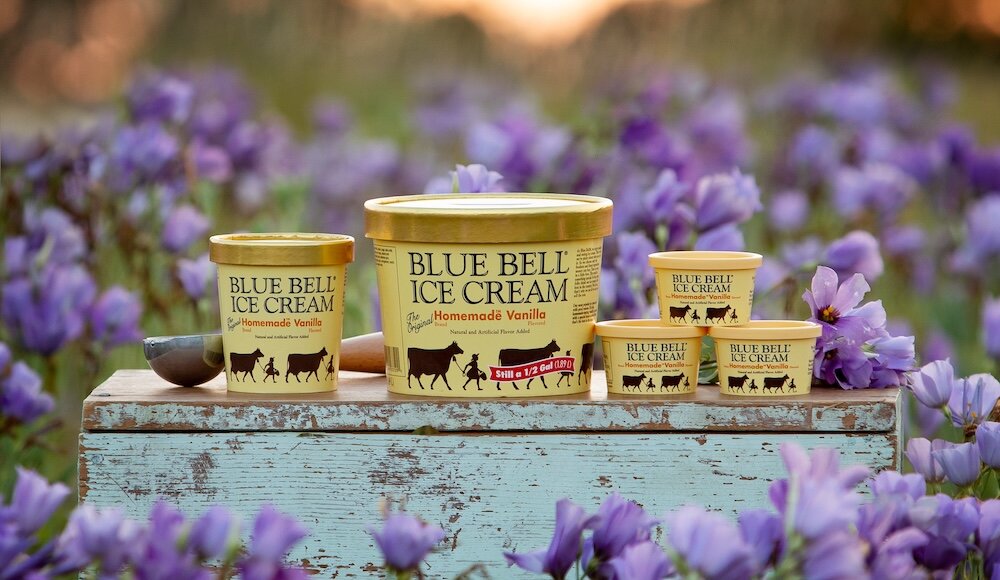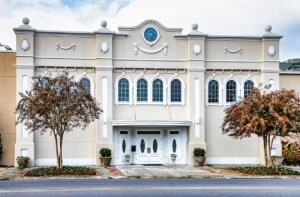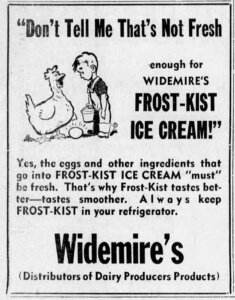
A person touring the Blue Bell facility in downtown Sylacauga could be forgiven for assuming the company had always been there. Yes, Blue Bell, with its diet-smashing samples parlor, has occupied the site for nearly 30 years.
But the history of ice cream manufacturing in Alabama’s Marble City actually dates back nearly a century. If an Old Testament scribe were to write down the story, it might look something like this: Frostkist begat Widemire’s; and Widemire’s begat Foremost; and Foremost begat Farmbest; and Farmbest begat Flav-O-Rich; and Flav-O-Rich begat Blue Bell.
In the beginning, on May 31, 1929, as Southern temperatures soared, readers of the local paper learned of the organization of the Frostkist Ice Cream and Creamery Co. Founded by four local men with $100,000 in common stock, the new venture was initially housed in one portion of the Sylacauga Warehouse Co., on the corner of Industrial Avenue and Fourth Street.
Operations began just a few weeks later and proved a boon to area dairy farmers. The editor of the Sylacauga News called for residents of the Marble City to patronize stores that carried the sweet new treats. Asking for Frostkist brand ice cream “will have the same tingling delightfulness that the name implies,” he wrote. “In using Frostkist Ice Cream you are building Sylacauga. You are doing your bit to create a market for milk, which in turn adds to the local farmers’ income.”

Soon the first scoops of the new product were being sampled at local establishments. In addition to ice cream for soda fountains, the company produced a few sweet novelty items, including “a dainty cake and cream combination in a flat cone form, easy to eat and more convenient than the ordinary cone.”
By Independence Day, Frostkist’s territory had expanded to surrounding communities of Rockford and Weogufka. But the onset of the Great Depression later that year slowed the pace of growth and the company faced a rocky road to success. After 10 months in operation, the company reorganized as the Sylacauga Ice Cream and Creamery, though the product line continued to be marketed as Frostkist. The largest stockholder and proprietor of the retooled venture was Edwin Luther Widemire, a Pennsylvanian who in 1922 married into a Sylacauga family.
Widemire knew the industry and he knew the town. Following his service in the signal corps during World War I, he went into the ice cream and milk distribution business, first in Birmingham and then in Oklahoma City.
The ambitious Widemire was determined to use as much raw milk as local dairy farmers could supply.
He expanded the enterprise into making butter, cheese and pasteurized milk. In an attempt to ensure the availability of “Grade A” milk from local dairy farmers, Widemire launched a series of education efforts through ads published in the local newspapers.
With profits for top-tier milk at nearly 50% higher, farmers who invested the additional effort could bring home $1,300 for every 12 cows. That is akin to more than $20,000 today. Widemire even offered to build sanitary barns for certain producers. “You don’t have to have any cash,” read one advertisement. “You can’t lose — we will take the chances.”
In 1941, the board voted to rename the company Widemire’s Inc. It was a fitting change, reflecting his work to expand a struggling creamery and establish branches in Alexander City, Montgomery and Florence, as well as the cachet his name carried in the industry. Widemire belonged to the 12-member steering committee of the International Association of Ice Cream Manufacturers. The organization helped set industry policies and practices in the U.S. and Canada.

In 1953, Widemire sold his company to Foremost, one of the nation’s largest dairy producers. The family relocated to Mobile in 1969. Sylacauga’s loss was the Port City’s gain. That same year, Widemire opened an ice cream parlor in an old Texaco station along Old Shell Road. Decorated to honor his Pennsylvania Dutch ancestry, it remained in the family for more than a decade after he died in 1984. Still in operation today after more than 50 years — and now owned by Cammie Wayne — Cammie’s Old Dutch Ice Cream Shoppe has expanded to two additional locations.
Back in Sylacauga, the churns continued under the large umbrella of Foremost. The company’s estimated annual economic impact was $1.25 million and grew larger still with the construction of a new facility. A number of the brand’s most popular frozen treats were made there, including a characteristically odd 1950s culinary treat called the flaming ice cream snowball. These prepackaged dollops of vanilla ice cream were rolled in a crunchy coconut topping and covered with colorful cake icing. Crowned with a candle, it promised to be the “Happy Ending of a Perfect Party.”
Foremost gave way to Farmbest in 1967. In time, Farmbest gave way to Flav-O-Rich. Though the company names and owners changed, the location, and many of the employees, remained the same, one of the pillars of the local economy. For the first time since the Depression, that industry was cast into uncertainty when, in 1995, Flav-O-Rich announced a restructuring that included shuttering the Sylacauga plant. The move endangered the jobs of nearly 150 employees. Plant manager Pete Moore sprang into action. He contacted executives of Blue Bell, a Texas-based company eager to expand into Southeastern territories. Moore touted all the benefits the Sylacauga facility had to offer them. (Locals will hasten to say that this was a “cold call.”)
Negotiations happened quickly and with the assistance of city leaders. Soon, those unmistakable Blue Bell containers were rolling out of Alabama’s Marble City. Since then, the company has undertaken several multi-million-dollar expansions and now employs almost 300 people.
In 1930, a Pennsylvania transplant saved Sylacauga’s ice cream industry from falling victim to the Great Depression. Two generations later, a manager’s gumption, with the support of the community, helped to ensure that one of their town’s sweetest business successes did not merely melt away into history.
Historian Scotty E. Kirkland is a freelance contributor to Business Alabama. He lives in Wetumpka.
This article appears in the August 2025 issue of Business Alabama.



